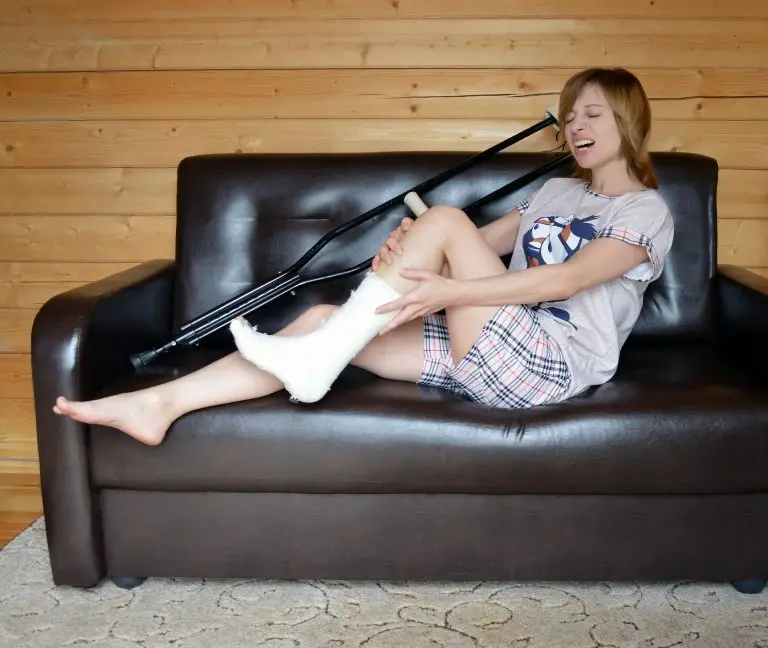It is very common that people get injured doing physical activities or even training in the gym. Hiking is no different. It is very easy to injure yourself on a hike. If you love hiking take a look at this list on how to avoid common hiking injuries to keep yourself safe. After all your lower body takes the majority of the impact during hiking.
Foot Stress Fractures
This is one of the most common injuries that could occur. A stress fracture occurs when you overuse your muscles after they have become fatigued. This way they are unable to absorb the shock and protect your bones as they would. When stress is placed on fatigued muscles, the overload of stress goes to the bone, which causes a tiny crack or a stress fracture. Stress fractures most commonly occur in the bones of the lower leg and foot.
Plantar Fasciitis
The most common cause for foot pain is plantar fasciitis. It radiates from the bottom of the heel all throughout the foot. The plantar fascia is a tissue that is present at the arch of your foot. It runs from your heel to your toe and is there to absorb any strain and stress placed on your feet. Plantar fasciitis occurs when the tissue becomes inflamed and overused.

Toe Fracture
Fracturing your toe is very common as the toe sticks out it is injured a lot of the time. A fractured toe usually becomes swollen, tender and discolored. However, if the bone is out of place then your toe will appear deformed. Most broken toes can be fixed symptomatically.
Achilles Tendinitis
Achilles tendon is a large tendon that is located in the back of your lower leg. When it becomes irritated and inflamed from repetitive use and stress you get a condition called Achilles tendinitis. You have pain along the tendon or back of the heel. This will worsen with more activity, and you would experience severe pain the day after a hike.
Heel Spurs
Heel spurs are bony growths that appear underneath your heel. These may sometimes cause pain and inflammation. They are caused by repeated strain on your foot muscles and in most cases are related to plantar fasciitis. To help prevent this, make sure to stretch and massage your feet regularly. Another important aspect is to choose good shoes for hiking. If you develop heel spurs, visit your doctor to know what to do next.
Bunions
A bunion is usually caused when the bone on the side of your toe gets pushed out of alignment. They are usually caused by shoes that are too narrow for you or by having excessive pressure on your big toe joint as you are walking. To fix this you would have to wear custom orthotics, bunion pads or toe separators to relieve pressure overnight and keep your toes aligned.
Abrasions
Abrasions are similar to bruises. Sometimes when you are hiking in dirty water, fine sand and silt can be washed into your socks. This mixture makes it feel like sandpaper rubbing against your feet for every step you take. This is why clean and dry socks are very important. However, if you have gotten abrasions on your feet clean and sterilize them with alcohol before wrapping them up in gauze. So follow these steps on how to avoid common hiking injuries and be safe.
Trench foot
Trench foot is caused when your feet have been cold and wet for a long duration of time. If you have gotten trench foot your feet will be on fire and feel like you are stepping on broken glass. Another way you could tell you have it is when your soles look like cottage cheese. If you suspect you have trench foot visit the doctor immediately. If it progresses trench foot can be very dangerous.
Muscle Cramping
Cramping is another common hiking injury that is commonly produced by dehydration. Sounds simple enough then, to avoid cramping make sure you are drinking a lot of water. In the heat of the moment, it can be hard to remember, especially if the moment is particularly cold. Drink the right amount of water. Stretching before your big hike can help too. If you find yourself succumbing to a nasty cramp, stretching further can alleviate some of the pain.
Twisted Ankle
Hiking on an uneven trail that contains rocks, hidden obstacles, or slippery surfaces. A twisted ankle can be hard to avoid. While some twists are often fixed by the “walk it off” approach, others need a touch more attention if you plan to end your hike. To avoid these time-sucking injuries, wearing boots with ankle protection may be a good place to start out. Beyond that, carrying a hiking stick or some stabilizer will assist you to balance your steps.

